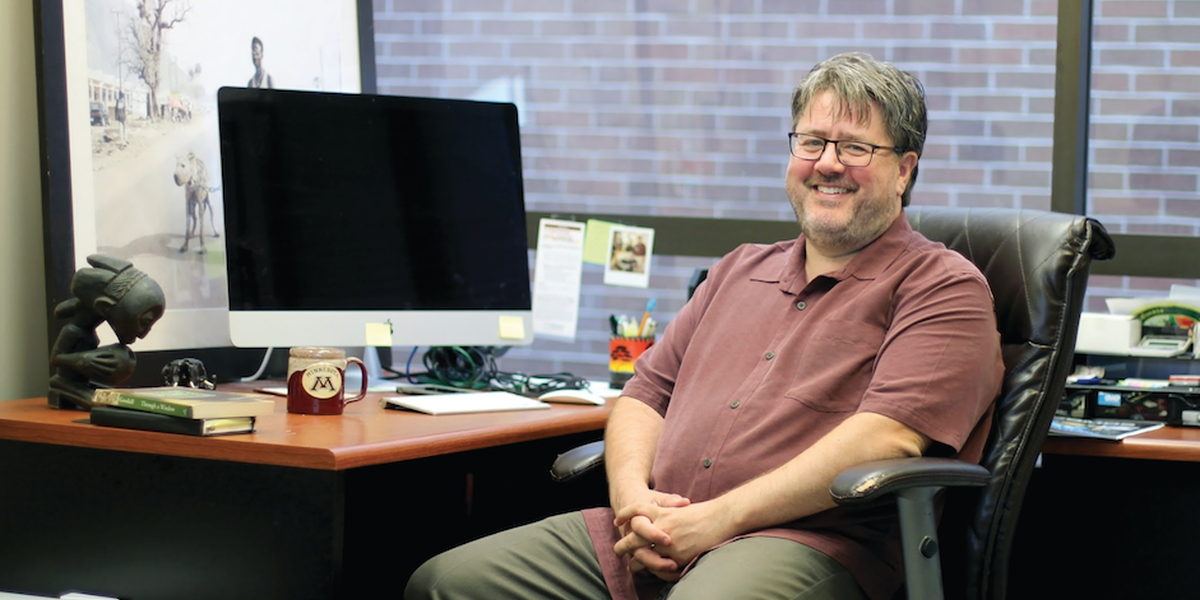Fifteen years in Gombe
Dominic Travis, DVM, MS, reflects on what he has learned in the 15 years he has spent conducting research in Gombe National Park.

Dominic Travis, DVM, MS, reflects on what he has learned in the 15 years he has spent conducting research in Gombe National Park.
Teaser and hero photos by Amanda Stombaugh
Sometimes we focus on the individual animal, sometimes we focus on the group, but most of the time we focus on the interface—where these things intersect with humans and the environment,” explains Dominic Travis, DVM, MS, associate professor in the University of Minnesota College of Veterinary Medicine’s (CVM) Department of Veterinary Population Medicine. An expert in wildlife epidemiology and veterinary public health, Travis tackles emerging health and natural resource sustainability issues at the interface of wildlife, domestic animals, and humans. He and his colleagues in the department’s Ecosystem Health division ask, “What is the ecology of the health among and between the living organisms that make up an ecosystem?”
Travis previously served as a veterinary epidemiologist at Chicago’s Lincoln Park Zoo. There, in 2003, he and his colleagues built an ecosystem health program with primatologist and anthropologist Jane Goodall, PhD. The program worked alongside Goodall’s long-term behavioral project at Gombe National Park in Tanzania. Now, Travis is continuing his work with the Jane Goodall Institute (JGI) studying infectious disease outbreaks and other illnesses in nonhuman primates.
The U, he says, has provided opportunities to develop new collaborations. “The reason the University of Minnesota is important is that ecosystem health is a giant multidisciplinary team sport and the U just so happens to have expertise in everything.”
“The reason the University of Minnesota is important is that ecosystem health is a giant multidisciplinary team sport and the U just so happens to have expertise in everything.”
Dominic Travis
For 15 years, Travis has collaborated with scientists at the JGI and the University of Minnesota to build a noninvasive infrastructure in Gombe National Park that strategically tracks local chimpanzee health. “Wildlife is not only where diseases hide but also the part modern science knows the least about,” says Travis.
The team’s observations have helped pinpoint disease early enough to mitigate its impact. Through management changes in basic epidemiological prevention, they have seen fewer outbreaks and a lower mortality rate since the project began.
“Gombe is the perfect natural lab to do this work,” says Travis, who considers the park an ecosystem health demonstration site. “It’s a small park, so every single animal has been individually identified and watched for 50 years.”
The project’s larger implications have reverberated around the world. Advised by Travis and his Ecosystem Health colleagues, CVM graduate students are conducting research in Gombe. Tiffany Wolfe, DVM, ’15 PhD, newly appointed assistant professor in the Department of Veterinary Population Medicine, completed her PhD by tracking tuberculosis among the park’s chimpanzees and nonhuman primates. She was coadvised by Travis and Randy Singer, DVM, PhD, professor in the Department of Veterinary and Biomedical Sciences.
“The park is a living laboratory to work out wildlife surveillance methods and to intersect them with humans in and around the park,” says Travis, “And since we began doing this, we are not only helping wildlife but we are quickly connecting it to human and ecosystem health.” He says a major lesson in having tracked and connected this interface has taught Travis that wildlife health is inseparable from the ecosystem and its individual parts.
Travis’ reverence for chimpanzees, Gombe, and human health nourishes his pursuit of better understanding an environment’s interconnectedness. “These chimps represent all the issues of the interface. If we can protect our most high-profile population in the world—that represents our knowledge of the evolution of people—that will say something about our commitment to improving ecosystem health.”